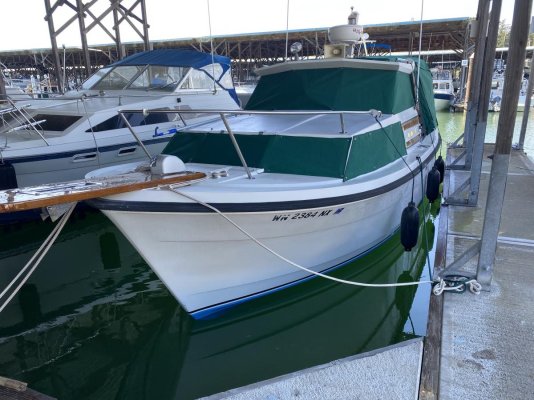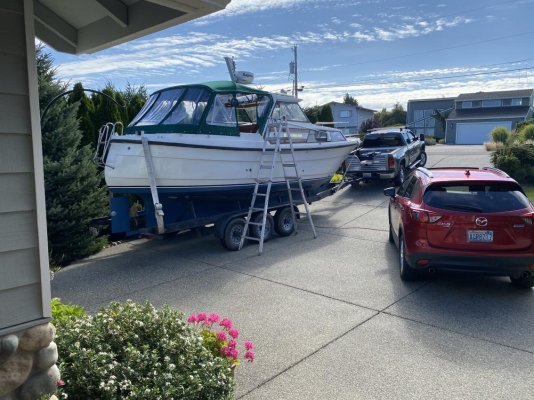With a substantial enough tow vehicle, you could pull a C-Dory 25 or 26, or a Sea Sport 24, 26 or 27. Any of these could work for a couple, and cruise at 15-20 knots or a bit more, depending on engine. Some larger Sea Sports have diesel power. There are a handful of Sea Sports on Yachtworld.
After 7 years with our C-Dory 22, we upgraded to a 26-foot diesel/sterndrive powered Bounty 257, much like a similar-sized Sea Sport. It would cruise at 18 knots and 1.75 nmpg, or at 6-6.5 knots and 4 nmpg. Cruised and fished the Inside Passage with this one for 18 summers and nearly 40,000 nm, with a third crew some of the time.
If you decide not to go with a towable boat, a Camano 31 or Nordic Tug 32 could be a great choice. They would offer much more space, very pleasant and economical cruising at 6-7 knots, or more speed if you're OK with burning a good bit more fuel.

 ). Those 2 experiences are the main reason we now knew what boat to look for, and that first great boat choice led to 30,000+ miles and 53 countries. If you are like we were, there's a lot of 'you don't know what you don't know' right now. The good news is that there are solutions to that puzzle.
). Those 2 experiences are the main reason we now knew what boat to look for, and that first great boat choice led to 30,000+ miles and 53 countries. If you are like we were, there's a lot of 'you don't know what you don't know' right now. The good news is that there are solutions to that puzzle. and a Pilot 34 would be just that much more fun.
and a Pilot 34 would be just that much more fun. 

